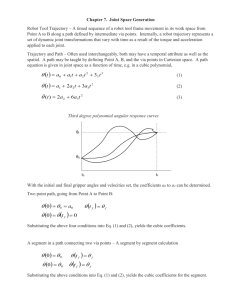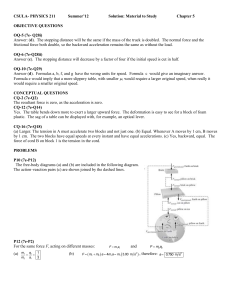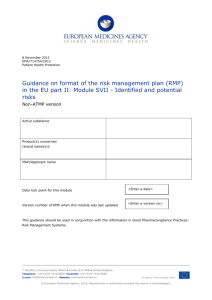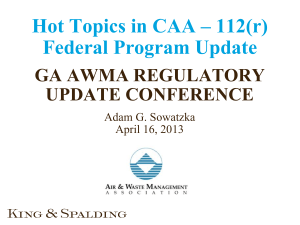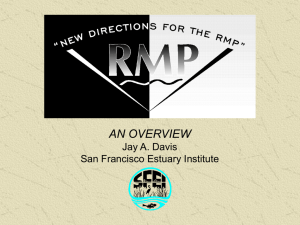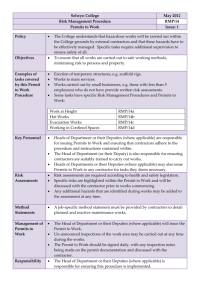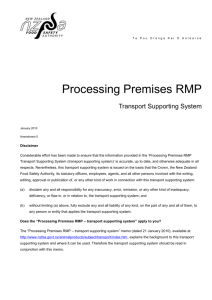Linear Positioning System 11-17
advertisement
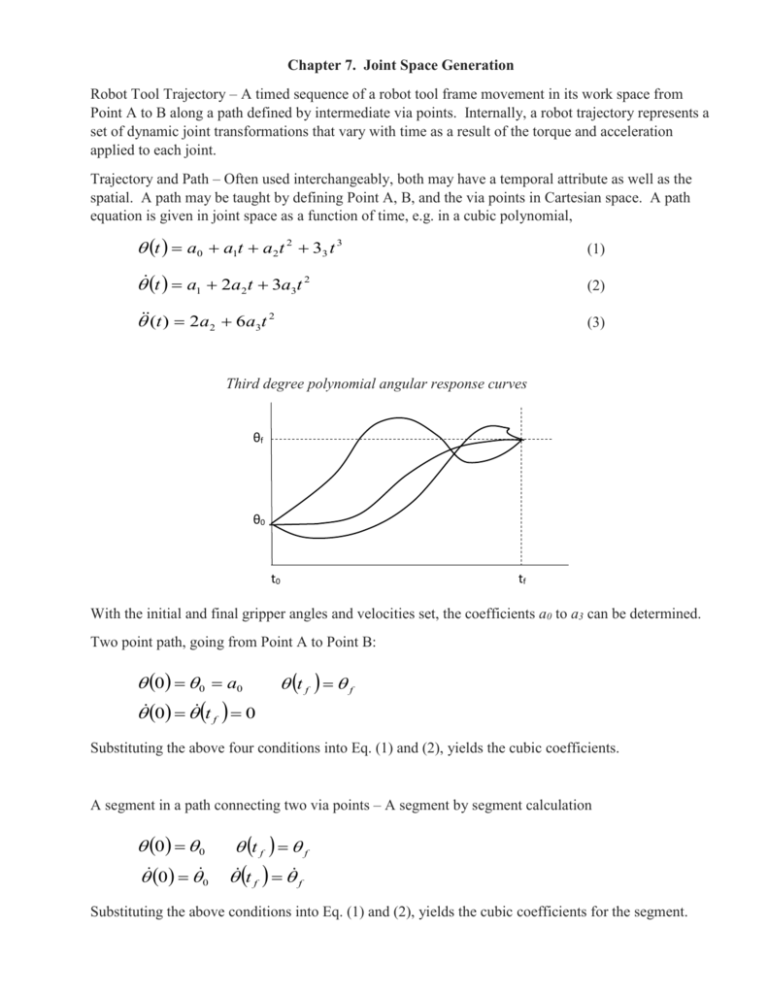
Chapter 7. Joint Space Generation Robot Tool Trajectory – A timed sequence of a robot tool frame movement in its work space from Point A to B along a path defined by intermediate via points. Internally, a robot trajectory represents a set of dynamic joint transformations that vary with time as a result of the torque and acceleration applied to each joint. Trajectory and Path – Often used interchangeably, both may have a temporal attribute as well as the spatial. A path may be taught by defining Point A, B, and the via points in Cartesian space. A path equation is given in joint space as a function of time, e.g. in a cubic polynomial, t a0 a1t a2 t 2 33 t 3 (1) t a1 2a2 t 3a3t 2 (2) (t ) 2a2 6a3t 2 (3) Third degree polynomial angular response curves θf θ0 t0 tf With the initial and final gripper angles and velocities set, the coefficients a0 to a3 can be determined. Two point path, going from Point A to Point B: 0 0 a0 0 t f 0 t f f Substituting the above four conditions into Eq. (1) and (2), yields the cubic coefficients. A segment in a path connecting two via points – A segment by segment calculation 0 0 0 0 t f f t f f Substituting the above conditions into Eq. (1) and (2), yields the cubic coefficients for the segment. Parabolic path with linear acceleration Velocity Angular Position Acceleration Linear path with parabolic blends Angular Position Acceleration Velocity θ" θ"t1 0 0 t2 t12 t1 -θ" 0 t2 Interpolation - Movement between via points. Linear (straight line) or Polynomial (curved). All robot joints, including the prismatic joints, are motor driven. Therefore, intuitively a linear motion with a high degree of accuracy is more difficult to achieve than a non-linear motion. The robot arm normally pass near, not through, the via points to avoid jerky motion unless instructed to do so. If no via points are specified, the robot will take a smooth “PTP” path. Homework #9 Solve (6.8) – Forward velocities and accelerations only. Solve (7.2), (7.5), (7.7), (7.10), Due 11/25. Study Examples and (7.17). Path Generation – Liner Path with parabolic blends The path will bypass the via points in blending process without touching them. θt θ2 θ4 t 23 ,23 t12 , 12 t3, θ3 θ1 t1 t12 T12 t2 T23 Linear Path with Parabolic Blends t Design attributes – Segment duration (linear and blend), velocity of the linear segment, acceleration of the blend, For interior points 23 ( 3 2 ) / T23 t 3 (34 23 ) / 3 t 23 T23 1 1 t 2 t3 2 2 where T23=t2+t23+t3 For end points, starting with the relationship to find the blending time t1 1t1 ( 2 1 ) /(T12 1 t1 ) 2 2 t1 T12 T12 2( 2 1 ) / 1 12 ( 2 1 ) /(T12 t12 T12 t1 1 t1 ) 2 1 t2 2 Pseudo via points – when the path must go through the via points. θt t Linear Path with Parabolic Blends over Pseudo via points for through points
